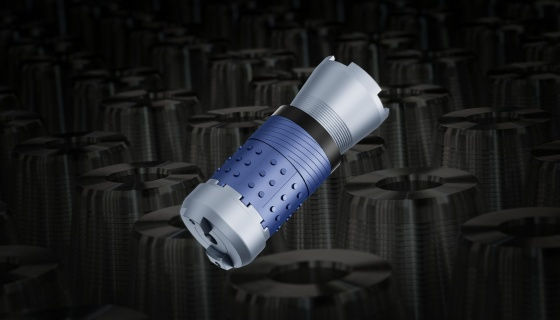Exploring the Advantages of Self Adaptive Algorithms in MPD
- Ver Techs
- Sep 17, 2025
- 3 min read

When you step back and consider how drilling in challenging oil and gas fields has evolved, it’s surprising how far managed pressure drilling has come. In the world of mpd drilling, precision is everything. One moment the balance between wellbore pressure and formation stability holds, and the next, a slight hiccup can cascade into a serious incident. This is where self‑adaptive algorithms begin to shine, weaving their way through mpd systems and fundamentally changing how an mpd engineer approaches uncertainty underground.
Imagine an mpd oilfield crew facing a formation where the pressure window is wafer‑thin. Traditional pressure drilling techniques demand manual tweaks and constant alertness. The mpd engineer monitors the mud weight, watches for kicks or losses, and adjusts choke settings inch by inch. Introducing a self‑adaptive algorithm into the mpd system transforms that dynamic. The system observes pressure changes in real time, interprets subtle fluctuations, and reacts—sometimes faster than a human operator could—even before the formation hints at trouble. It essentially frees the mpd drilling operation to be agile yet meticulously controlled.
Behind that ease of control lies an ecosystem of mpd equipment: rotating control devices, chokes, manifolds, real‑time fluid monitoring, and more. A rotating control device is perhaps the most symbolic piece—it connects the surface to the downhole environment, allowing for rotation while containing pressure. When you pair an intelligent algorithm with an iRCD or other smart RCD, you get a potent mix: fluid data from sensors, processed instantly, feeding back to controls that adjust pressure with exacting finesse. It’s the kind of responsive choreography that redefines what pressure drilling means in practice.
The mpd system, equipped with self‑adaptive logic, watches trends—say, a creeping rise in annular pressure that doesn’t trigger an alarm yet—and begins to adapt the choke curve. That subtle pre‑emptive adjustment could be the difference between smooth drilling and a loss of circulation event or a dangerous kick. In fast‑changing oil and gas operations, time is the hidden currency, and these algorithms spend it wisely.
For mpd engineers, this shift isn’t just about automating routine tasks. It’s about augmenting their insight. With intelligent algorithms stepping in to manage the immediate pressure dynamics, engineers can focus on higher‑order thinking: interpreting trends, planning for next‑phase challenges, coordinating with the rig crew. It elevates mpd drilling from reactive firefighting into strategic orchestration—technology and human expertise working in tandem.
There’s also a subtle environmental payoff. In traditional setups, chasing pressure variations manually can yield excess mud circulation, more fluid usage, and increased waste. The self‑adaptive mpd system optimizes that process: fewer over‑corrections, less fluid lost, reduced environmental footprint—all while keeping the wellbore stable. In an mpd oilfield context, that adds up to both greener practices and operational cost savings.
Of course, implementing such foresight in an mpd system isn’t trivial. It requires robust mpd equipment that can communicate swiftly, sensors that offer reliable readings in chaotic drilling environments, and algorithms that are resilient to noise and anomalies. Vertechs, for instance, has been at the forefront of integrating intelligent fluid monitoring and electric choke control into their IPC‑MPD systems, which showcases how these technologies come together in an mpd oil and gas setting.
Many operators now expect turnkey mpd systems—where the rotating control device, choke manifold, fluid monitoring, and the algorithmic brain all work as a cohesive unit. That kind of integration reduces rig‑up time, improves response, and simplifies the mpd engineer’s life. When the setup is tightly connected, the algorithm becomes an elegant partner, reading subtle shifts in downhole pressure and adapting with minimal fuss.
In the grand scheme, self‑adaptive algorithms in mpd drilling help push the needle toward safer operations, smarter resource use, and more confident decision‑making. They don’t replace the mpd engineer—they empower them, allowing for smoother execution and deeper oversight. In complex wells and aggressive drilling campaigns, that translates to fewer surprises, stronger well control, and a more sustainable rhythm for operations.
At the end of the day, self‑adaptive technology isn’t a gimmick—it’s the long‑term evolution of managed pressure drilling. By making mpd systems smarter, fluid monitoring more proactive, and mpd equipment more networked, the industry gains a subtle but powerful ally. It’s in that quiet harmony between algorithm and engineer that the future of pressure drilling finds its strength.
With a commitment to cutting-edge solutions and operational excellence, Vertechs continues to empower operators worldwide, helping them navigate the toughest drilling conditions with confidence. Whether you’re looking to optimize your current MPD setup or explore new drilling opportunities, our team is ready to provide expert guidance and tailored solutions.
Please contact us, at engineering@vertechs.com to learn more about how we can support your next project.
Read Our One More Blog: Advancements in Hydraulic Fracturing: The Emergence of Dissolvable Frac Plugs






Comments